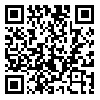
 , Abbas Vosough Moghaddam *
, Abbas Vosough Moghaddam * 
 2, Ahmad Hajebi3
2, Ahmad Hajebi3 
 , Mohammad Hossein Salarian zadeh4
, Mohammad Hossein Salarian zadeh4 
 , Habib Emami5
, Habib Emami5 

2- MD-FFPH. Assistant Professor, Health Sector Policy Coordination Group, In charge of Minister for Policy making Affairs Bureau, Ministry of Health and Medical Education,Tehran, Iran ,
3- MD. Associate Professor, Department of Psychiatry, Iran University of Medical Sciences and Health Services, Tehran, Iran
4- MD-MFPH. Director of Intersectoral Planning Department, In charge of Minister for Policy making Affairs Bureau, Ministry of Health and Medical Education, Tehran, Iran.
5- Ph.D. Associate Professor in Epidemiology, Masih Daneshvary Hospital, Shahid-Beheshti University of Medical Sciences and Health Services, Tehran, Iran
Background and Aim: The Pars Energy-Economic Special Zone, as the energy capital of Iran, needs a healthy productive workforce. In order to be able to promote equitable health indicators of the Zone, it is essential to first obtain information about the situation of the health system in the region.
Material and Methods: This was a cross-sectional qualitative study. Data were collected using an essential public health services (EPHS) performance assessment questionnaire and a researcher-developed questionnaire for strengths, weaknesses, opportunities and threats (SWOT) analysis of the Zone health system. In the next phase, stakeholder analysis was done: the major stakeholders were invited and asked, after explaining the methodology to them, to complete, individually, the EPHS performance assessment and the SWOT analysis questionnaires, followed by grouping and summarizing the results. Finally, content analysis of results of the group discussions was done and the main domainsا extracted.
Results: The EPHS overall average score was 37.8 (out of 100, the standard score). The greatest weakness was allocated to information functioning. Delivering public health services by the district health networks was the most important strength. Further analysis of the data showed that the far external environment in all the subdomains was the major threat to the public health in the zone.
Conclusion: Based on the findings, it can be said that the organizational status of the Zone is in a weak and threat position. One of the root causes is poor functioning of the public health system. It is essential that the Ministry of Petroleum and the Ministry of Health and Medical Education find effective ways for integrated leadership of the public health services in the Zone.
Received: 2015/12/21 | Accepted: 2015/12/21 | Published: 2015/12/21
| Rights and permissions | |
 |
This work is licensed under a Creative Commons Attribution-NonCommercial 4.0 International License. |
